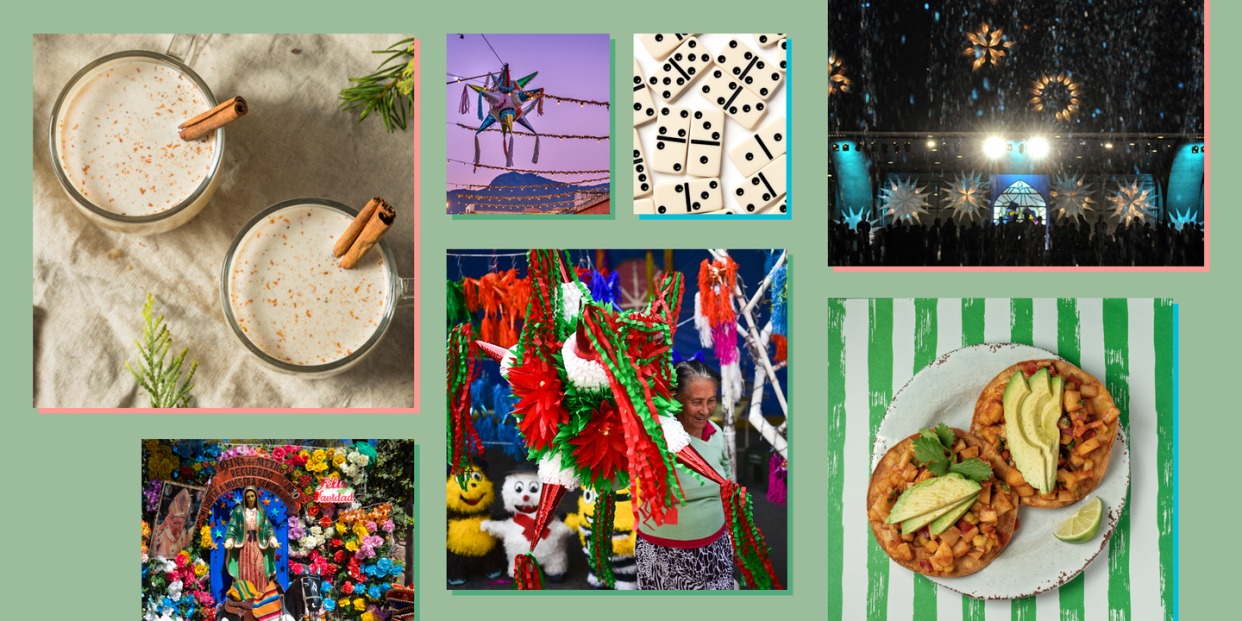The History and Traditions Behind Nochebuena

In many Hispanic, Latinx, and Filipino families across the world, Christmas Eve is more than just the day before Christmas, it's a huge celebration that, for some, is even bigger than Christmas Day itself. Called Nochebuena, the exact parameters of how you celebrate depend on your culture, your family, and even the particular year. Some people spend the entire afternoon and late into the night eating and drinking, dancing, and playing games. Others first head off to Misa de Gallo, or Mass of the Rooster, then celebrate into the wee hours, or eat dinner first and then get to Mass.
Below, you'll learn more about Nochebuena and the beautiful traditions of the holiday.
Food is the star of the festivities:
What's on the menu at a Nochebuena feast depends on where you're celebrating, or the particular culture to which your hosts belong. "We have a lot of food," said Francisco Pallarés-Santiago, who lives in Puerto Rico. Where he's from, people celebrate from the day after Thanksgiving all the way through the end of January in the world's longest holiday festivities. His family's spread includes pernil (pork shoulder), pasteles (a tamale-like dish made from plantains and root vegetables), arroz con gandules (rice with pigeon peas), lechón a la vara (whole roasted pork), morcilla (blood sausage), arroz con leche (a rice pudding-esque desert with cinnamon and raisins), tembleque (a jiggly coconut pudding), majarete ( a sweet cornmeal desert), coquito (a spiked coconut version of egg nog), and pitorro (a version of moonshine that’s infused with tropical fruits).
In Mexico, tamales, tostadas, pozole, tacos, atole, or bacalao (salt cod) will typically show up at the table, explains the Cruz family. Dessert often includes champurrado, arroz con leche, and flan.
In Spain, seafood and soup are traditional Nochebuena dishes, with turrón afterward. This special seasonal nougat is made of honey, sugar, egg whites, and roasted almonds or nuts, usually in a rectangular or circular shape. Colombian Nochebuena dinners might include ajiaco Bogotano (a traditional potato soup) and natilla, a cornstarch and milk-based dessert. In Venezuela, you may find pernil, or pork leg, with towering panettone, a sweet bread loaf. And in the Philippines, a hot noodle soup called sotanghon and pineapple-infused chicken and pork may grace your table.
Dancing and games are featured prominently:
While dinner is usually the main event during Nochebuena, no holiday is truly complete without some additional festivities. In Puerto Rico, Pallarés-Santiago says, it's not Christmas until Bombazo Navideño 2 is playing. Parrandas, or street parties with lots of music and dancing, also keep the festivities going long into the night.
All over the world, Nochebuena usually involves music and dancing bomba, salsa or merengue, playing dominoes, launching colorful paper lanterns, sometimes even fireworks, and always plenty of family time. Some families let kids open presents after Mass, while others pass out only one and make them wait for the rest until the next morning. In the Cruz family, they cap things off by breaking a piñata at the end of the evening.
Many religious households put out a Nativity set as part of their decorations, and some families don't put the baby Jesus in the manger until Christmas Day, to symbolize his birth.
Religious observers attend a special Mass:
Much like Christmas all over the world, Nochebuena also involves a midnight Misa de Gallo, or Mass of the Rooster for religious celebrants. Legend has it, the baby Jesus arrived at the stroke of midnight, and a rooster crowed to herald his birth. That's why you'll also find roosters among the holiday decorations in a lot of Spanish, Portuguese, and Filipino households.
In the Philippines, nine rooster masses, or Misas de Aguinaldo, precede the one on Christmas Eve. The tradition is a holdover from when Spanish missionaries instituted a novena, or nine consecutive prayer services, to emphasize the importance of the holiday. Unlike the solemn mood many people associate with Roman Catholic observances, these are festive celebrations. Mass begins at 4 a.m. and the celebration often includes fireworks, music, and a traditional breakfast afterward. In Puerto Rico, says Pallarés-Santiago, the churches decorate to the nines and hold 5 a.m. Masses that feature lots of music, celebrating the birth of Jesus by, (as the song goes) "making a joyful noise."
You Might Also Like

